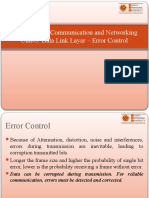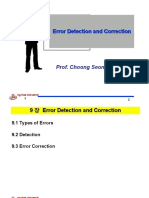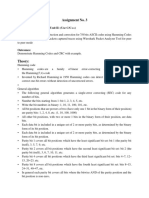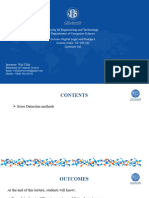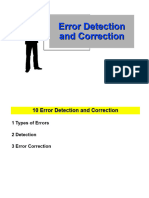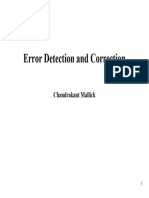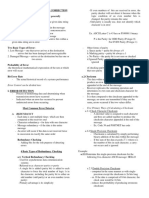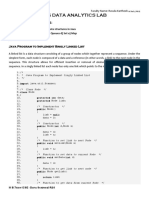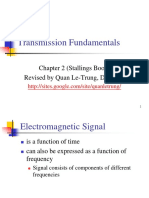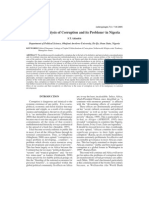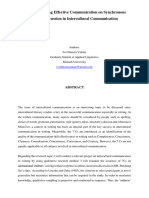0% found this document useful (0 votes)
109 views74 pagesUNIT-2 Error Detection Methods
This document discusses error detection and correction techniques used at the data link layer. It begins by describing different types of errors that can occur during data transmission such as single-bit errors, multiple-bit errors, and burst errors. It then explains various error detection methods including parity checks, checksums, and cyclic redundancy checks (CRCs). CRCs use polynomial binary division to generate and check a redundant checksum added to the end of a data unit. The document also covers error correction techniques such as backward error correction using retransmission and forward error correction where errors are automatically corrected using error correcting codes. Hamming codes are described as a technique that can detect and correct single bit errors by adding redundant parity bits in specific bit positions.
Uploaded by
4416 LikhithaCopyright
© © All Rights Reserved
We take content rights seriously. If you suspect this is your content, claim it here.
Available Formats
Download as PPT, PDF, TXT or read online on Scribd
0% found this document useful (0 votes)
109 views74 pagesUNIT-2 Error Detection Methods
This document discusses error detection and correction techniques used at the data link layer. It begins by describing different types of errors that can occur during data transmission such as single-bit errors, multiple-bit errors, and burst errors. It then explains various error detection methods including parity checks, checksums, and cyclic redundancy checks (CRCs). CRCs use polynomial binary division to generate and check a redundant checksum added to the end of a data unit. The document also covers error correction techniques such as backward error correction using retransmission and forward error correction where errors are automatically corrected using error correcting codes. Hamming codes are described as a technique that can detect and correct single bit errors by adding redundant parity bits in specific bit positions.
Uploaded by
4416 LikhithaCopyright
© © All Rights Reserved
We take content rights seriously. If you suspect this is your content, claim it here.
Available Formats
Download as PPT, PDF, TXT or read online on Scribd
/ 74


















